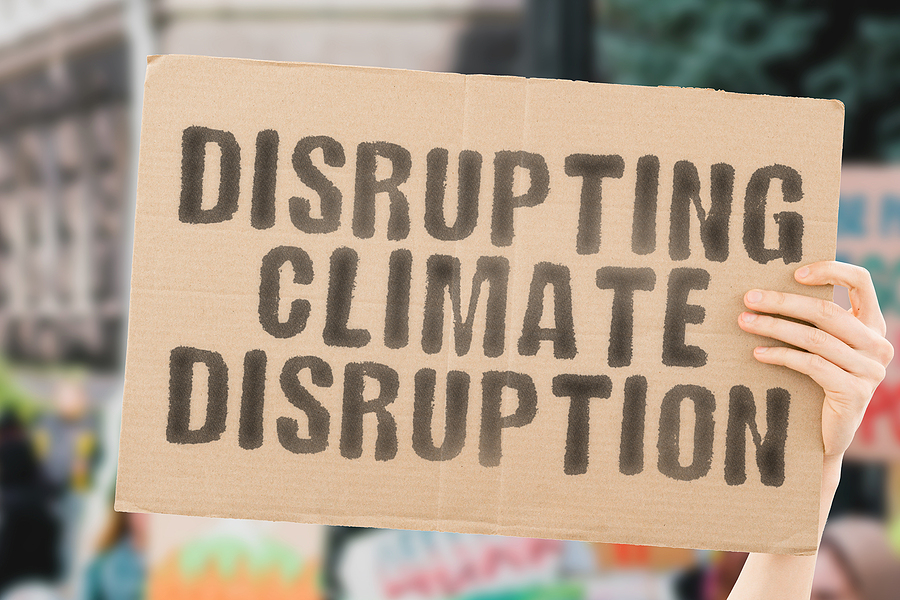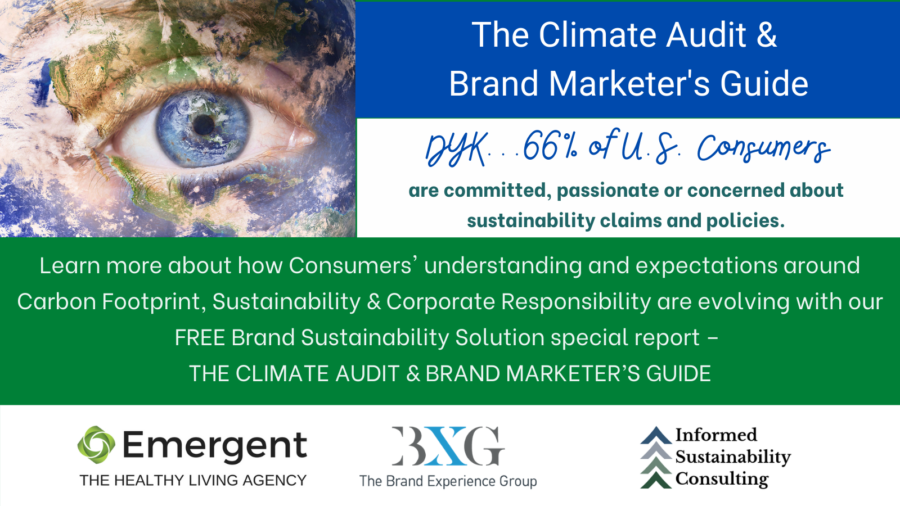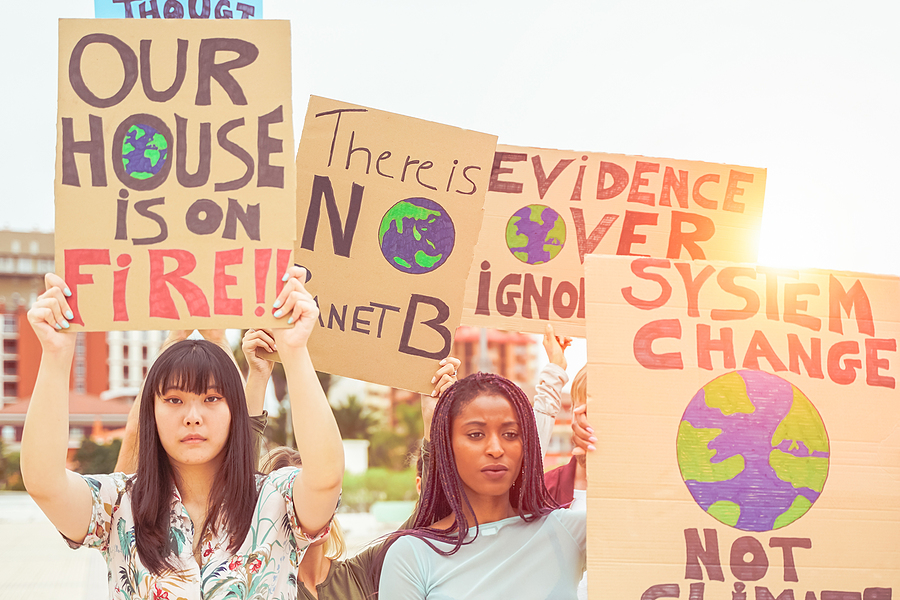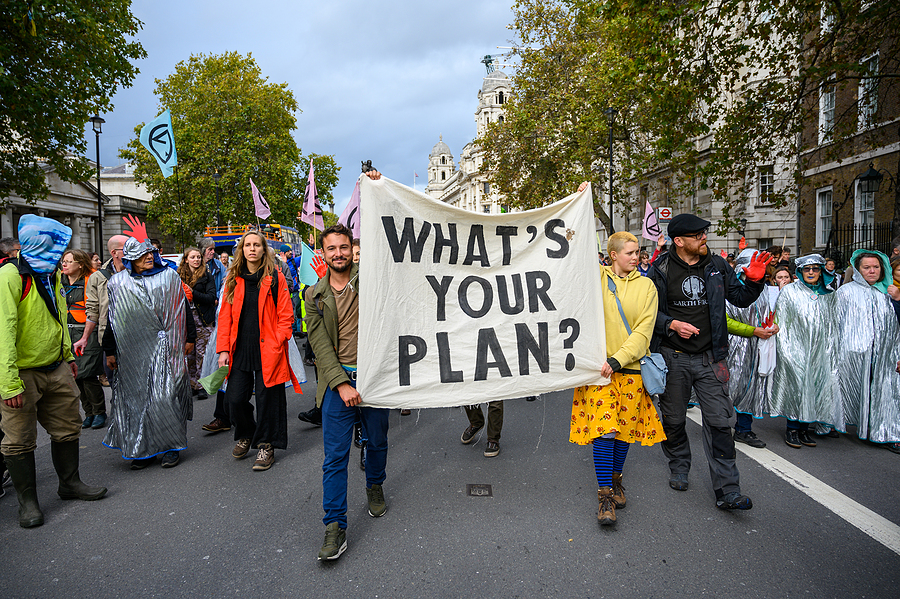
Now on Deck: Emergence of Climate-Conscious Consumption
July 12th, 2021 Posted by Emergent Brand Activism, brand advocacy, Brand trust, Carbon footprint, change, Climatarian, Climate Change, climate culture, Greenhouse Gas, Greenwashing, Healthy Living, Navigation, Sustainability 0 comments on “Now on Deck: Emergence of Climate-Conscious Consumption”Mainstream consumers aligning for greater good
Sustainability concerns could not be a hotter topic right now. The temperature continues to rise as consumers learn there’s a connection between their purchase decisions and climate impacts. According to Hartman Group Sustainability 2021 trend research report, the issue was already gaining significant momentum prior to the pandemic. It is virtually on fire now as environmental concerns have become attached to purchase motivations for mainstream consumers — a new form of climate-conscious consumption.
- To help you determine where your company is on the sustainability and climate readiness continuum, we’ve created a simple self-assessment tool you can access, offered later in this article.
Hartman characterizes this as a form of ‘secular spirituality’ – a moral system that operates as a guide to decision making now focused on the greater good. Consumer sentiment on environmental and social wellbeing therefore should not be underestimated by brand marketers.
Helping drive this cultural sea change is increased media coverage tracing the impact of food and beverage consumption to the environment, personal health, safety and planetary security. This is occurring in parallel with a potent cocktail of climate anxiety and concerns over a legacy of regressive public environmental policies, that now serves to motivate consumer desire for real change.
We’re witnessing a causal link emerge in consumer sentiments between everyday life (I bought a hamburger) and bigger problems ahead (it took 600 gallons of water, increasingly scarce land resources, toxic methane released into the air, and two years to make that hamburger). The growing imperative is urgent action needed to stem the tide and get ahead of global warming impacts on life before our environment reaches a point of no return.
What’s telling is the move from fringe to the center. At one time so called “green” concerns sat on the periphery – important to a narrow audience of climate advocates. Now, this has migrated into the mainstream, likely because people are increasingly confronted with global warming impacts right in their front yard – Seattle at 116 degrees in June? Absolutely historic.
As evidence of this transition: Hartman found that 51% of consumers say they purchase sustainable products specifically because they are better for the environment – that’s up 17 points from 2017 to 2019.
Progressive brands see this and will get ahead of it
What does sustainability and climate readiness look like? How should brands behave in an environment when consumers want to make pound-for-pound comparisons and seek transparency on just how climate positive a brand is?
Carbon footprint is about to become a defining tool in assessing environmental faithfulness. Yet there is no recognized umbrella benchmark for how this should be measured and calculated. Until industry associations coalesce around a standard set of rules for sustainability science and data, its likely to feel a bit like the wild west, with third-party category expert climate sheriffs holding court.
Emergent isn’t standing on the sidelines. We’ve already weighed in on the climate challenge with our Brand Sustainability Solution program. The first-of-its-kind suite of services integrates scientific carbon footprint assessment with consumer insight research to determine which areas of climate positive behavior are most important to a brand’s user base; and marries the outcomes with a suite of marketing communications tools intended to help a company convey its sustainability story and climate policy bona fides.
Our consumer insight research partner, Brand Experience Group, has already completed a study that makes a clear case for the business benefits of strengthening sustainability commitments – and found evidence that failure to do so will create a long-term drag on brand growth and profits.
Shift in responsibility for sustainability action to companies
For years the consensus among consumers was environmental solutions were an individual choice and responsibility. Now that perception has moved and people largely see companies as responsible for creating measurable change, mainly because they are viewed as key actors in the sustainability problem.
Hartman’s research charted the shift on who bears responsibility for sustainability and climate mitigation policies to large corporations. They are on top at 86% followed by government at 71% and individuals now at 58% – down from 73% a few years ago.
This is a moment in time when companies have an opportunity to take a leadership position on a rapidly developing cultural change that will impact their brand value proposition. Five key directional questions to consider:
- Have you conducted an independent, third-party Carbon Footprint to better understand climate impacts and to inform mitigation efforts?
2. Have you conducted consumer insight research to better understand how climate and sustainability concerns impact your core users’ behaviors and product choices?
3. Do you have a clear understanding of which sustainability issues (e.g. climate change, pollution of the oceans, animal welfare) are most motivating for your users?
4. Do you have a clear understanding of where your Sustainability efforts rank among competitors in your relevant categories (ahead of or lagging behind)?
5. Are you confident your brands’ sustainability narratives enhance consumer preference and choice?
These and other questions form the guideposts of sustainability and climate readiness. If you’re wondering how your company stacks up on progressive sustainability programs and policies, you can take our simple online assessment questionnaire. In just five minutes we can help you secure a snapshot of where your organization sits today on climate readiness.
Use this link to take the confidential online sustainability readiness questionnaire. Once submitted we will come back to you with a customized outcome report, complete with readiness scoring. Both the questionnaire and follow-up results report are complimentary.
It’s better to know where you are now and be proactive rather than wait for the sustainability boom to drop and find yourself in the unenviable place of reacting and playing catch-up.
Looking for more food for thought? Subscribe to the Emerging Trends Report.
Bob Wheatley is the CEO of Chicago-based Emergent, The Healthy Living Agency. Traditional brand marketing often sidesteps more human qualities that can help consumers form an emotional bond. Yet brands yearn for authentic engagement, trust and a lasting relationship with their customers. Emergent helps brands erase ineffective self-promotion and replace it with clarity, honesty and deeper meaning in their customer relationships and communication. For more information, contact [email protected] and follow on Twitter @BobWheatley.




